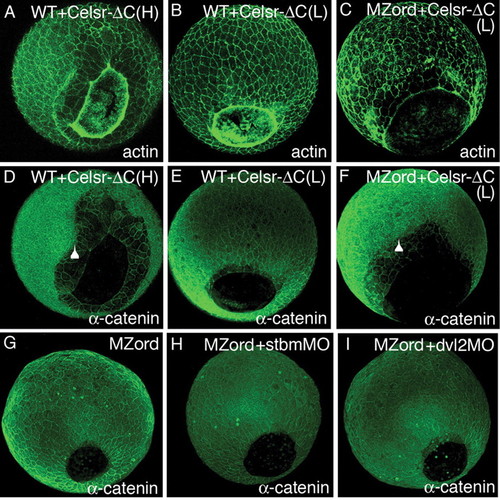Fig. 2
- ID
- ZDB-FIG-090220-62
- Publication
- Carreira-Barbosa et al., 2009 - Flamingo regulates epiboly and convergence/extension movements through cell cohesive and signalling functions during zebrafish gastrulation
- Other Figures
- All Figure Page
- Back to All Figure Page
|
A C-terminal truncated form of Celsr2 (Celsr-ΔC) is dominant negative and Celrs regulates epiboly independently of the PCP. Wild-type (A,B,D,E) or MZord embryos (C,F) were injected with 300 pg (H, high) (A,D) or 150 pg (L, low) (B,C,E,F) RNA encoding Celsr-ΔC-HA were visualised at 90% epiboly with phalloidin for actin (A-C) or anti-α-catenin (D-F). Arrowheads indicate the leading edge of deep cells, showing epiboly defects with deep cells retracted from the leading edge of the EVL. (G-I) MZord embryos (G) or MZord embryos injected with 0.4 pmoles stbmMO (H) or 0.75 pmoles dvl2MO (I) were visualised at 90% epiboly with anti-α-catenin. Dorso-posterior views of 90% epiboly embryos. Anterior is upwards and the antibodies used are indicated in the bottom right-hand corner. MZord embryos injected with stbmMO or dvl2MO show normal epiboly movements, as assessed by closure of the germ ring blastopore. |

